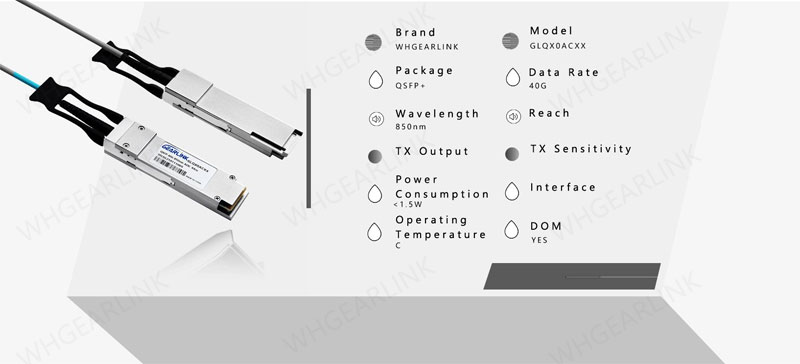The optical transceiver is composed of optoelectronic devices(including transmit and receive), functional circuits and optical interfaces. And the performance indicators for measuring optical transceivers are divided into two parts: transmit(Tx) and receive(Rx).
Tx:
①Central wavelength: all light has a certain wavelength distribution range, even the highest purity laser. Supposing that a laser with a wavelength of 850nm is required, the laser at 849~851nm can be realized in the end, but the wavelength of 850nm has the largest light energy, which is also called center wavelength.
② Tx output: It's the output power of the transmitting end when the optical module is working, which is generally the intensity of the light and express in dBm.
③Extinction ratio: the ratio of the average output optical power of the laser when emitting all "1" to it of all "0". The requirements of extinction ratio are different according to speed, transmission distance and laser. Generally, it required to be no less than 8.2dB for FP/DFB lasers, and the typical value is about 10dB.
Rx:
①Rx sensitivity: it's the receiving capability of the receiving end, the minimum input optical power that can be received correctly to identify the service signal. Generally speaking, the higher the rate, the worse the receiving sensitivity, that is, the greater the minimum received optical power, and the higher the requirements for the receiving end of the optical fiber module, which is the range of light intensity that can be received.
② Overload optical power: represents the endurance of the receiving end. It indicates the maximum input optical power that can be received correctly and identifies the service signal. If the light is too strong, it will exceed the working range of the receiving end. Generally speaking, it is the maximum light intensity that can be received, otherwise it will cause damage to the equipment.
③Received optical power: is the value when the receiving end is working normally. It indicates the range of optical power that can be received correctly and identifies the service signal. The upper limit value of the received optical power is the overload optical power, and the lower limit is the maximum value of the receiving sensitivity, that is, between the overload optical power and the receiving sensitivity.


